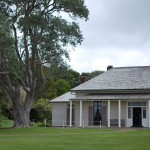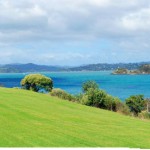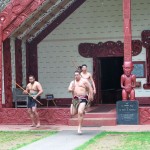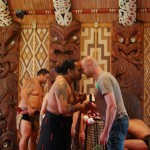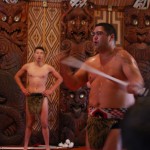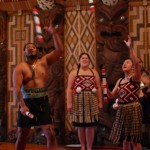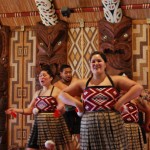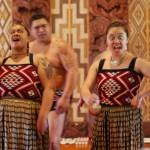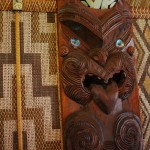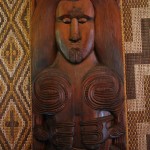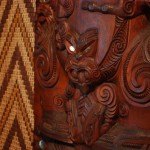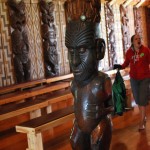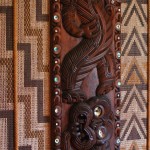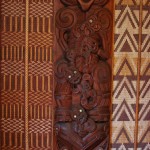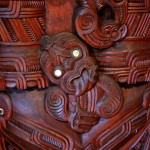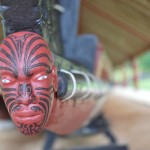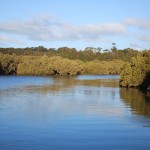Waitangi
The Treaty of Waitangi was signed in 1840 by representatives of the British government and Māori chiefs, here at the Waitangi Treaty Grounds in the Bay of Islands.
- Treaty house
- Bay of Islands, seen from the Treaty Grounds
The Māori interest was in some form of protection from the predations of whalers and other Europeans increasingly active in New Zealand. But did it establish British sovereignty over New Zealand? Or merely some sort of limited governance by the British? The English and Māori translation differed in significant ways.
The treaty appears to have been neglected for many years. But starting in the 1960s, Māori agitation for redress from historic wrongs eventually resulted (1975) in the establishment of the Waitangi Tribunal: a permanent body to investigate violations of the Treaty and to suggest concrete measures of restitution.
The Waitangi Marae (Māori meeting house) was built by Māori artisans in 1940 on the 100th anniversary of the Treaty. The cultural performance at the Marae starts outside by pretending that the tourist visitors are a visiting tribe, and going through a ritual challenge / welcome ceremony before the performance inside.
- Tourist ‘chief’ receives the welcome.
- Twirling poi balls. (Elena is practising these at school).
Marae are built by a local iwi, and honor their particular ancestor. The Waitangi one is a bit different because it is meant to symbolize all Māori tribes’ involvement in the treaty. The carvings, weavings, and paintings represent different regional styles.
- Waka (canoe) on the Treaty Grounds.
A trail down to a nearby mangrove swamp.
